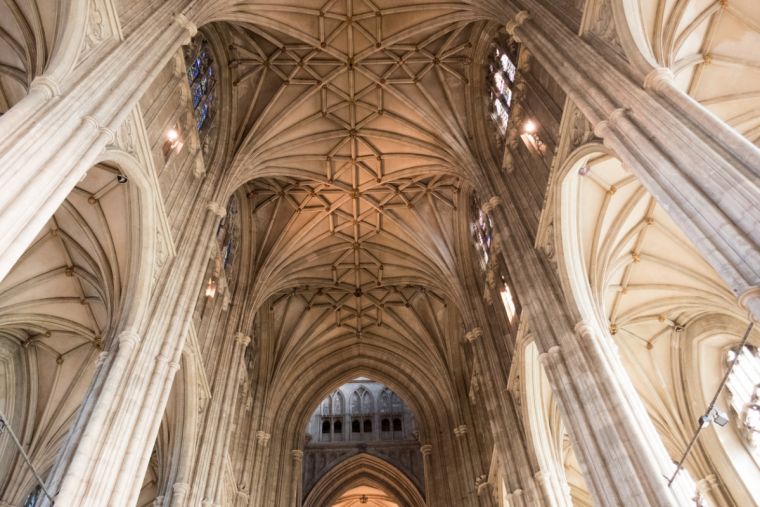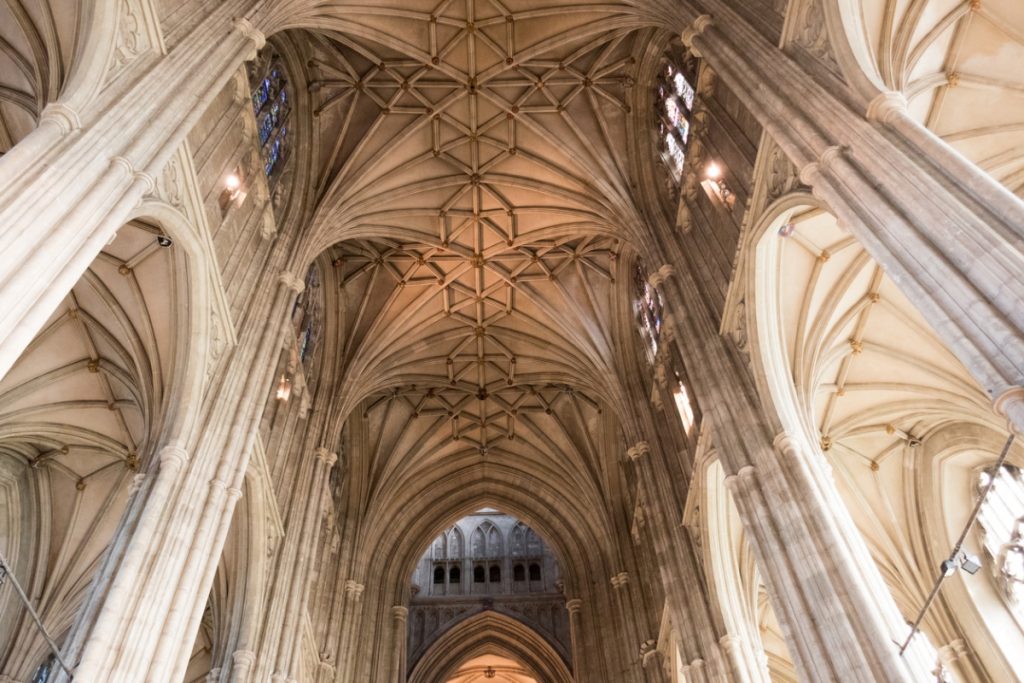
The fuss over the 'silent discos' held at Canterbury Cathedral has introduced some fascinating social developments into the highlight.
It’s typically seen because the older technology valuing the custom and historic historical past of Christianity in England, whereas youthful folks query such beliefs and sometimes reject the religion. However this division seems to be outdated.
Whereas the choice to carry an alcohol-fueled “silent disco” at England's most essential web site of Christianity has been strongly defended by Anglican powerhouses, a small however devoted group of younger folks have launched a spirited protest in opposition to what they see as an inappropriate use of the sacred area.
On the one hand, the dean of the cathedral, David Monteith, mentioned in a press release that the occasion can be “acceptable and respectful” and that “cathedrals have all the time been a part of neighborhood life in a approach far wider than their most important focus as centres. Christian worship and mission”.
Different distinguished Anglicans strongly defended him. The Bishop of Worcester, John Inge, said on X (formerly known as Twitter): “Let's fill the cathedrals with music. Once I served in Ely Cathedral we organized a 'Rave within the Nave' which was very noisy – and joyful. There was loud reward of the Lord in addition to simply noise.”
He agreed, quoting a vicar who believes silent discos are a approach of encouraging younger individuals who wouldn’t usually go to church to consider God.
Nonetheless, the ensuing response appears to have stunned them
social media, which was mirrored in virtually 2 thousand likes on one message by the Catholic journalist Edward Pentin, with many of the feedback adamantly in opposition to the usage of the cathedral as a nightclub.
Some within the hierarchy of the Church of England have been dismissive of individuals upset by these occasions. Matt Batten, Director of Communications on the Anglican Diocese of Wales, said on X: “I've been to silent-era horror films with reside music in well-known church buildings and cathedrals, however no person began like this…the snobbery in church tradition is ridiculous!”
However it’s fascinating that a few of the backlash in opposition to these occasions comes not from the normal wing of the CofE or these often accused of such 'snobbery' – though complaints have actually come from these quarters – however from what is named 'Gen Z'.
The occasion sparked a rain-soaked prayer vigil that included two younger atheists who disagreed with the disco. The organizer of the protest, Cajetan Skowronski, began a petition to stop the long-planned upcoming discos in different sacred buildings within the UK.
He instructed Catholic Unscripted that Canterbury Cathedral had beforehand been shielded from pagan Vikings by Christians who have been martyred for his or her efforts: “It’s so bitterly ironic that the present Anglican directors of the cathedral have invented a brand new type of desecration.
“Sacred means to be set aside for God, particularly on this case set aside for the worship of God. That's what a cathedral and cathedral grounds are for. That's what they have been consecrated for.”
This perception is extra broadly accepted within the Catholic Church, as proven by the latest controversy over Sabrina Carpenter's raunchy pop video filmed in a Catholic church in New York. Even the influential American bishop Robert Barron, greatest identified for his “Phrase on Hearth” ministry, gave his opinion on the Canterbury case.
Usually average and neutral, Bishop Robert used his Lenten reflections to criticize the conversion of the traditional web site of St Thomas Becket's homicide right into a “lewd ballroom”. As an alternative, he mentioned, cathedrals “are meant to attract us out of ourselves into the contemplation of a better world.”
It even prompted some Protestants to remark that these historic buildings must be returned to the Catholic Church. “At this level, regardless that you’re a baptized Anglican, I feel it’s best to return the buildings to Rome. You’re unfit stewards.” he said journalist Mary Harrington on X in response to the silent disco information.
The youthful age of a few of the protesters appears to replicate an fascinating pattern in society of youthful folks craving for custom and older expressions of religion. Journalist Esmé Partridge wrote for Unherd: “The boomer riot in opposition to Christianity and makes an attempt to modernize the church are themselves turning into out of date… younger folks have had sufficient of the profane, they’re now trying increasingly more for the sacred.”
Catherine Warr, a younger historian, said on X in response to Bishop Inge's remark supporting “raves”: “You don’t communicate for my technology of Christians and in my very own expertise, Gen Z Christians are a few of the most conventional and conservative in comparison with millennials; your reign is over dude. Folks yearn for actual religion, that means and custom in a meaningless world.”
In accordance with Peter Harris, there’s a sociological purpose: the youthful technology is rebelling in opposition to older sensibilities. The 'boomer' technology, which in its time rebelled in opposition to Christianity and custom, would possibly experience actions akin to cathedral discos, however as we speak's younger adults don’t: “Whereas rocking out in a cathedral with Eminem is a subversion of Gen X's selection, for Of sure. to hunt and honor the sacred,” he argues.
These modifications could be a pure fluctuation within the technology voltage. However the extent of the secularization of England and the West on the whole was unknown for millennia. Are youthful folks observing the results of Christianity's virtually full displacement from the general public sphere and craving for what has been misplaced?
